Beyond skiing: 7 things to do in Gstaad
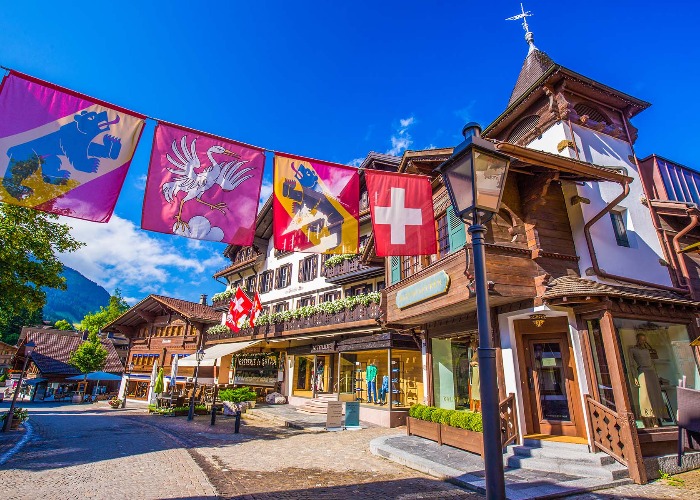
There’s more to this swanky Swiss ski resort than meets the eye.
Glamorous Gstaad: winter playground for the global elite and second home to the super-rich. It has long-standing rural traditions, historic villages and outdoor activities galore. The skiing is, of course, fantastic, but if you’re not a skier, snowboarder or on an unlimited budget, there are still plenty of good reasons to go to Gstaad.
1. Take a vintage train ride past peaks and lakes
Set between Zürich and Geneva in the south west of Switzerland, Gstaad is best approached by train – buy a Swiss Travel Pass for unlimited travel. You’ll curve past sparkling lakes, delve into dark pine forests and track along tiny, snow-covered villages on your ascent into the mountains of Bernese Oberland.
Check the timetable to time it right so you can ride on the GoldenPass MOB Belle Epoque train that runs along the Montreux–Zweisimmen line with the most spectacular stretch of scenery. Its coaches are inspired by the 1930s Golden Mountain Pullman Express (all wooden panelling, plush seats and brass-edged basket luggage holders) and include a 'wine cellar' coach where you can sip Swiss wines with regional specialities as you ride. The best views are on the Golden Pass Panoramic trains, though, with their floor-to-ceiling windows.
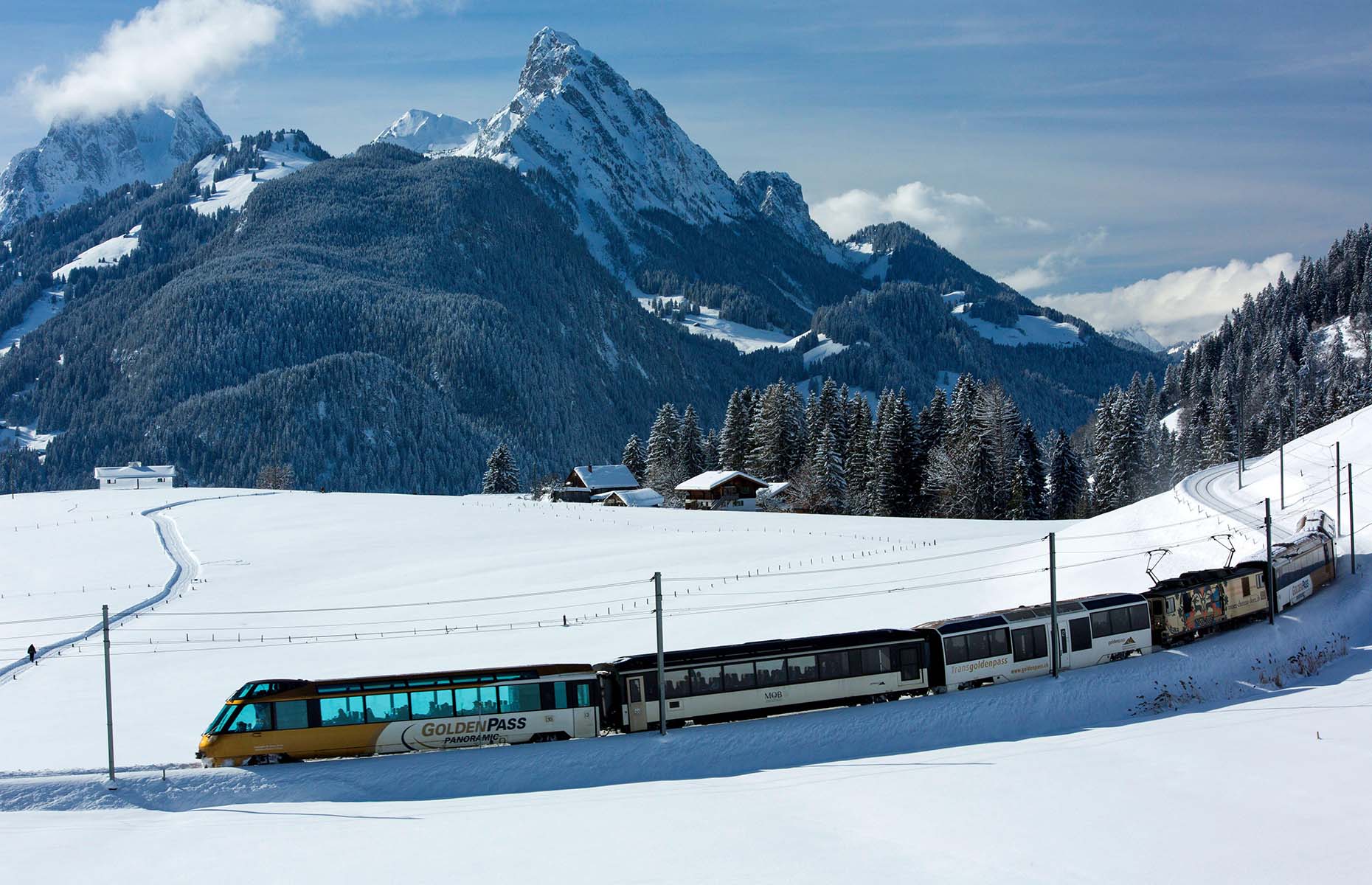 Prisma by Dukas Presseagentur GmbH/Alamy Stock Photo
Prisma by Dukas Presseagentur GmbH/Alamy Stock Photo
READ MORE: A weekend away in Lucerne
2. Discover mountain villages with old-world charm
All twinkling lights, ornate wooden chalets and church spires, pretty-as-a-picture Gstaad lies at 3,445 feet (1,050m) above sea level. For such a little village, it has a big reputation, built by its high-profile visitors, uber-luxe hotels and upscale fashion boutiques. But it’s just one of the 10 chalet villages that make up the Gstaad region. The others are Saanen, Schönried, Saanenmöser, Zweisimmen, Lauenen, Turbach, Feutersoey, Gsteig and Abländschen. Due to strict planning laws that have been in place since the 1950s, these settlements have retained their old-world charm, many still with medieval-era chalets and churches.
Take a stroll along Gstaad village’s pedestrianised promenade, overseen by the imposing turrets of the Neo-Gothic Gstaad Palace. Along with international boarding school Le Rosey (which has its winter campus in Gstaad), the grand hill-top hotel is inseparable from Gstaad’s growth from farming village to upscale mountain resort.
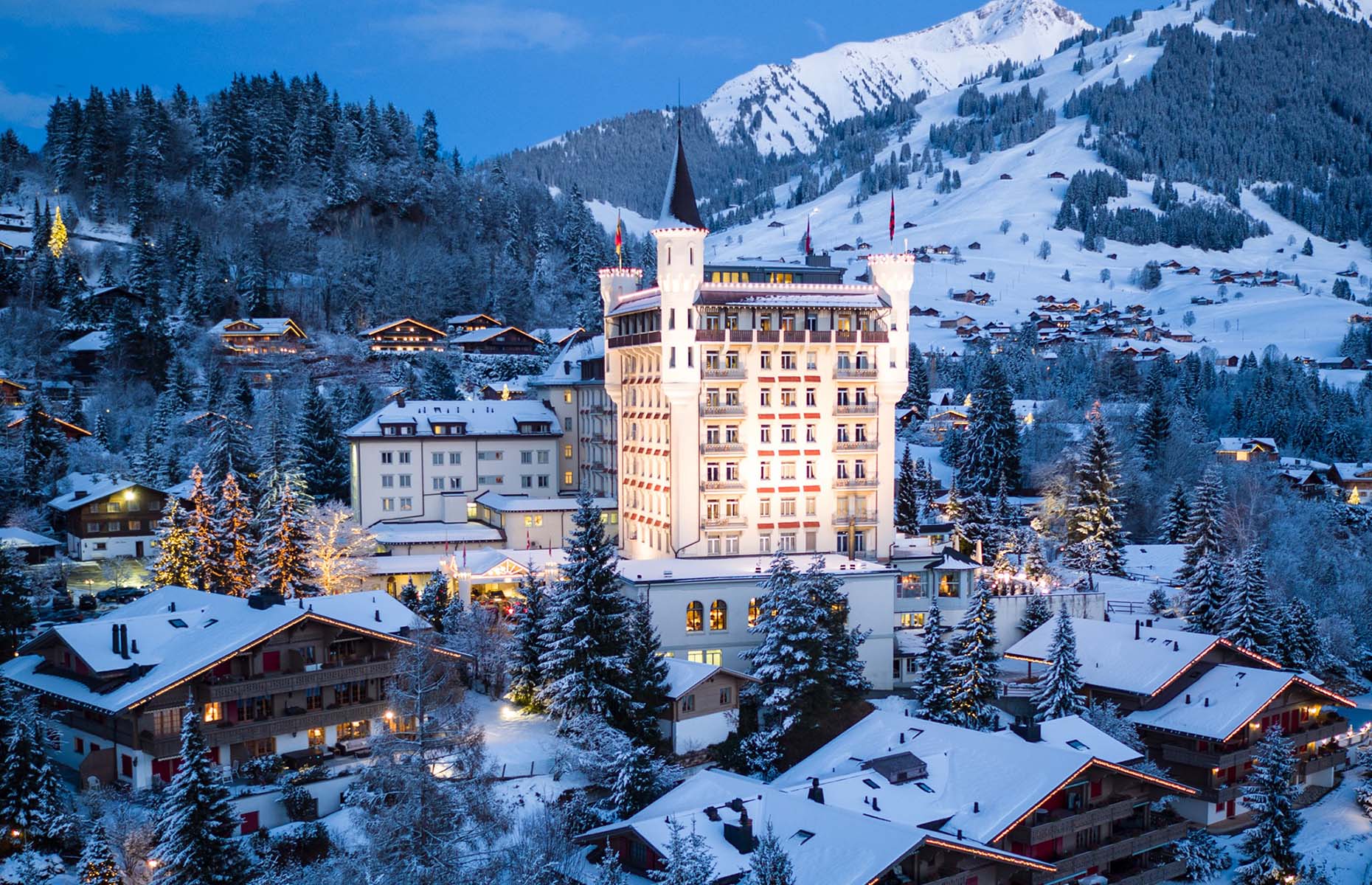 Gstaad Palace/booking.com
Gstaad Palace/booking.com
Peer in at luxury stores like Prada and Louis Vuitton, housed behind intricate wood chalet façades and pick up local delicacies at family-run bakeries, cheese shops and gourmet food emporiums. Pernet Comestibles has regional produce (including Gstaad wine and gin) along with the finest Champagne and caviar, should budgets permit. Don’t miss the breads and traditional sweet treats of the long-established bakery Early Beck – its nut cake and Pavés de Gstaad are typical of the region. Just around the corner, the R Chocolate Boutique also uses cream and milk from Saanenland cows and local honey to flavour its pretty creations.
Saanen is the most historic village, with its delightful little square, narrow streets and lanes, lined with old timber chalets (many Swiss Heritage Sites). The Church of Saint Maurice, dates to the 15th century, while the Amiet-Haus, built around 1555, is the oldest wooden residential building in the village. You can follow a historical tour of the village – stop off at the Museum der Landschaft to learn about the region’s rural handicrafts.
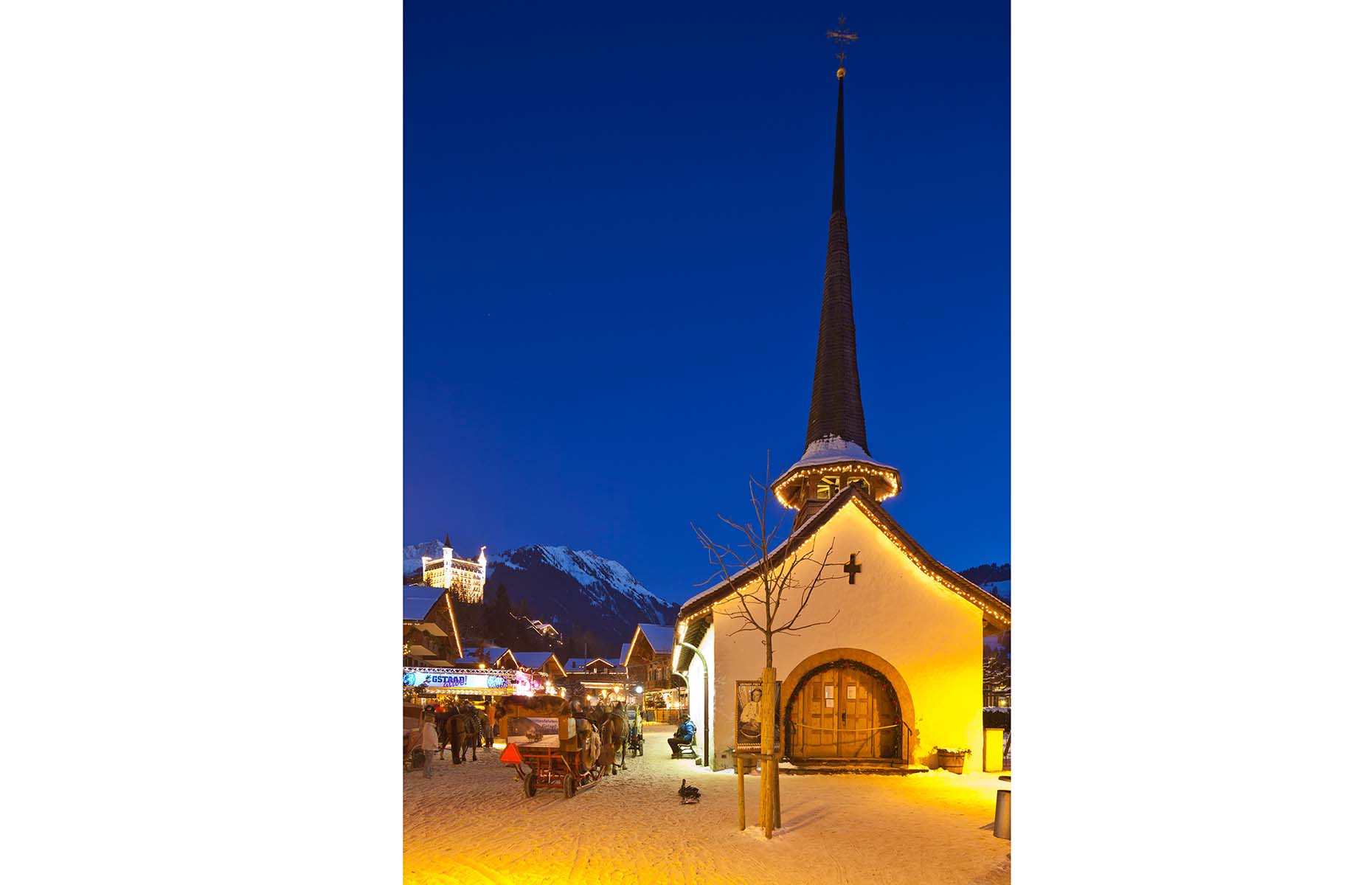 Hemis/Alamy Stock Photo
Hemis/Alamy Stock Photo
3. Enjoy regional traditions
One of the most endearing things about Gstaad is its combination of glitz and down-to-earth traditions. The region takes its agricultural heritage very seriously: there are 200 farms, 80 working Alpine pastures and around 7,000 cows, nearly as many as there are people (7,500 live in the area). Age-old seasonal celebrations still stud the year, including the Suufsunntig, or drinking Sunday, in July or August, and the cow’s annual descent, or Alpabzug, every September, and traditional practices are still adhered to. There are ample ways to discover its traditions. You can tour stables and visit dairies to watch the mountain cheese being made in the age-old way – cauldrons of milk are heated over open fires. You can also stay on farms to enjoy countryside views and rural life.
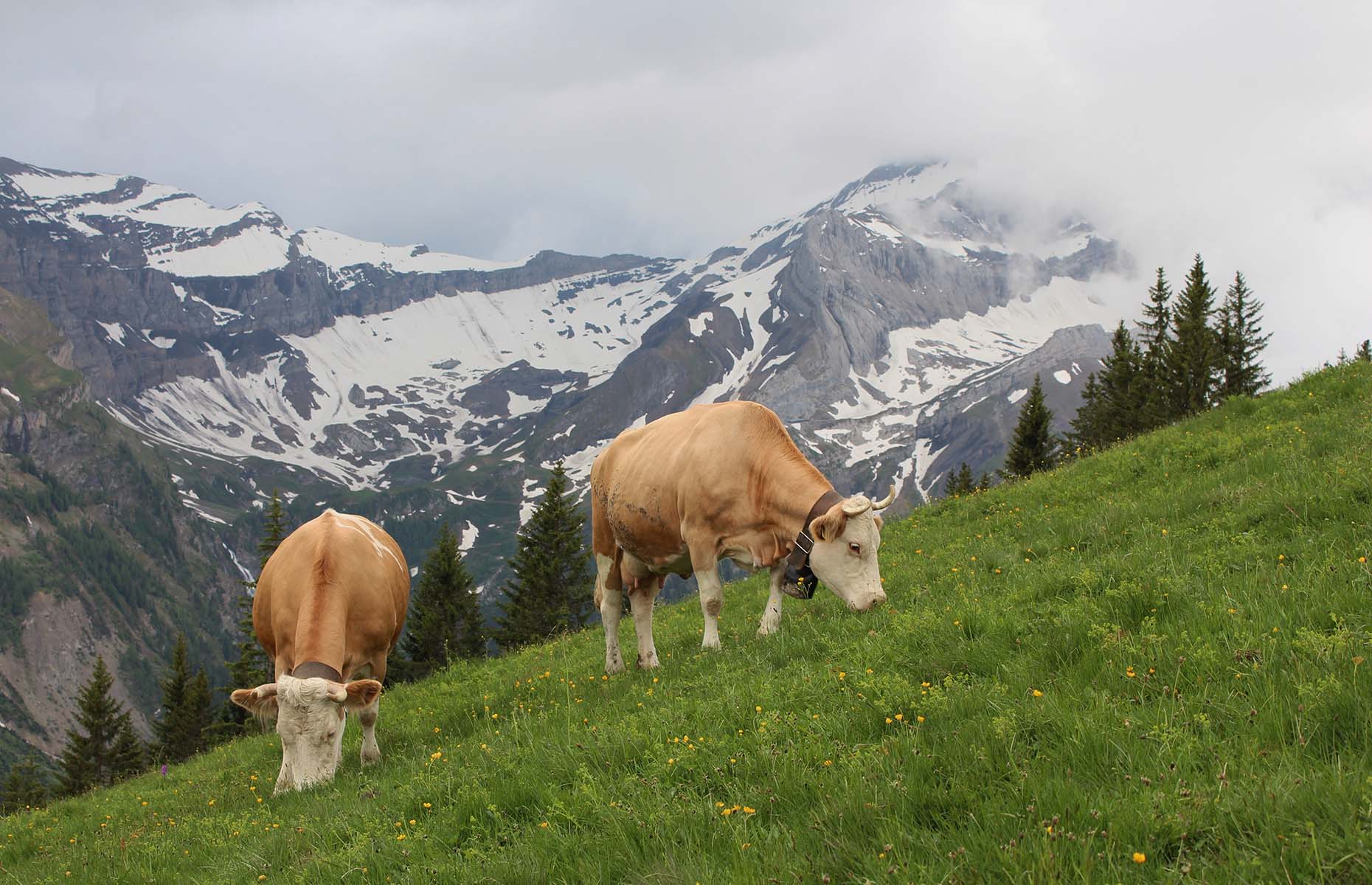 Ursula Perreten/Shutterstock
Ursula Perreten/Shutterstock
A visit to Molkerei Gstaad, an underground cheese cave, is a must. It's home to over 3,000 cheeses (including some rare ones) – make an appointment to book a tour to learn about the local cheese Bernese Hobelkäse AOP and its origins and taste different types.
You’ll also find local produce is celebrated at restaurants – try upscale rustic dishes at luxury boutique hotel Alpina Gstaad’s Swiss Stübli (overseen by Michelin-starred executive chef Martin Göschel) and tuck into Posthotel Rössli’s hearty menu. Salads are topped with wafer-thin curls of the hard and nutty mountain cheese and local veal is served with cream-and-wine laced sauce and crispy rösti at Gstaad village’s oldest hotel.
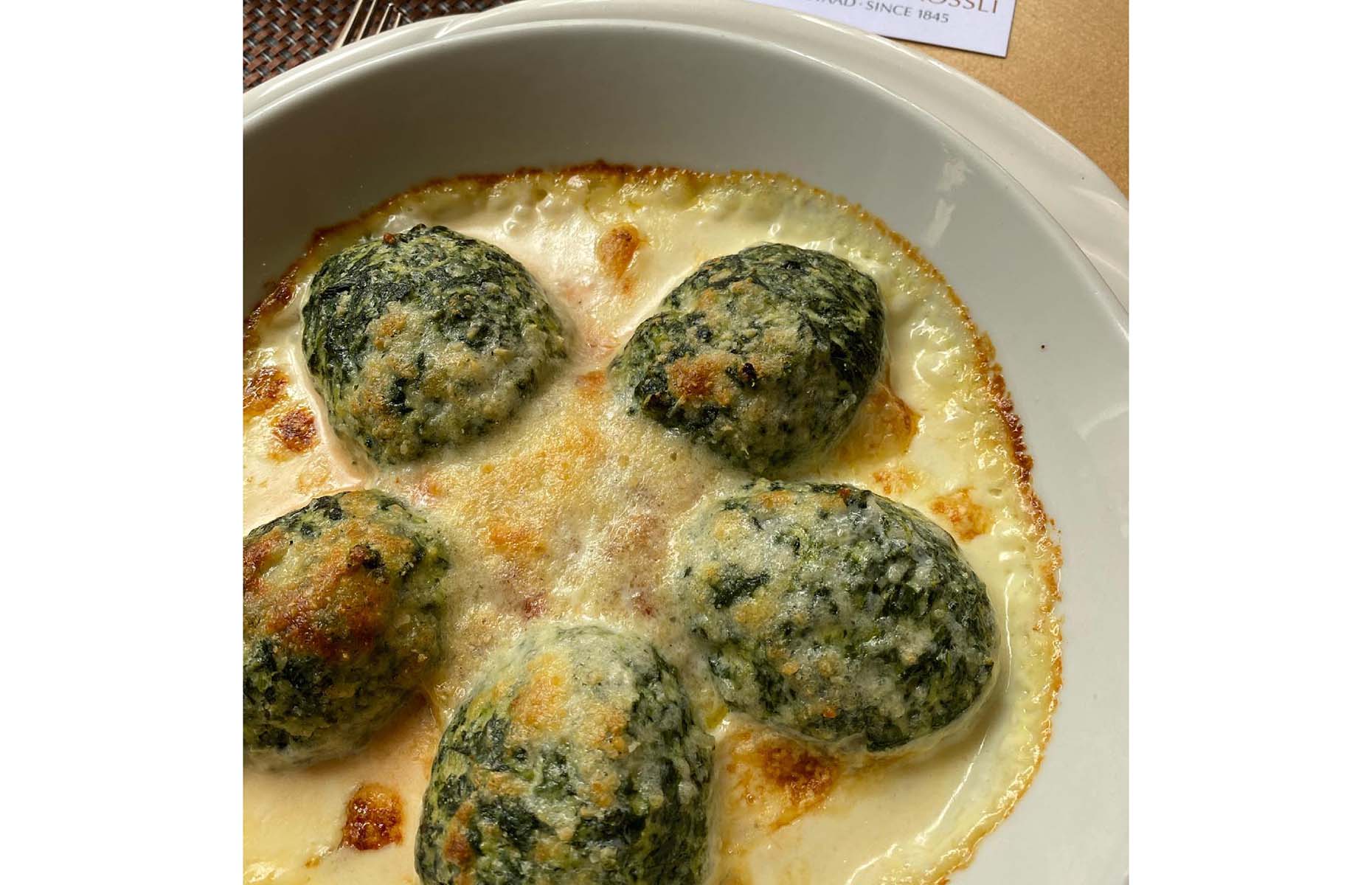 Posthotel Rössli Gstaad/Facebook
Posthotel Rössli Gstaad/Facebook
READ MORE: Exploring Basel, Switzerland's cool third city
4. Take a sleigh ride to a lake
There can be few more magical experiences than gliding across icy trails snuggled beneath blankets on a horse-drawn sleigh. With only the sound of creaking snow and jingling of bells, you’ll feel like royalty as you’re whisked off by sleigh from pretty little mountain village Lauenen, set between Gstaad and the imposing peak of the Wildhorn to Lake Lauenen and back. Tracking up and down hill along winding forest-edged tracks, you’ll pass frozen waterfalls (look out for ice-climbers clambering up the cliffs) until you reach the secluded alpine lake. It’s usually hidden under a thick blanket of snow in winter but with ice-encrusted trees all around and snow-capped peaks looming above, it’s stunning, nonetheless.
Call into Bochtehus Beizli, a 17th-century farmhouse that's now a family-run restaurant, to warm up along the way. Serving a short but sweet menu of regional specialities, you might get soup, sausage, raclette or fondue and there’s always homemade cakes for afters. There’s a lovely terrace outside or opt for a table in the homely fire-lit interior instead.
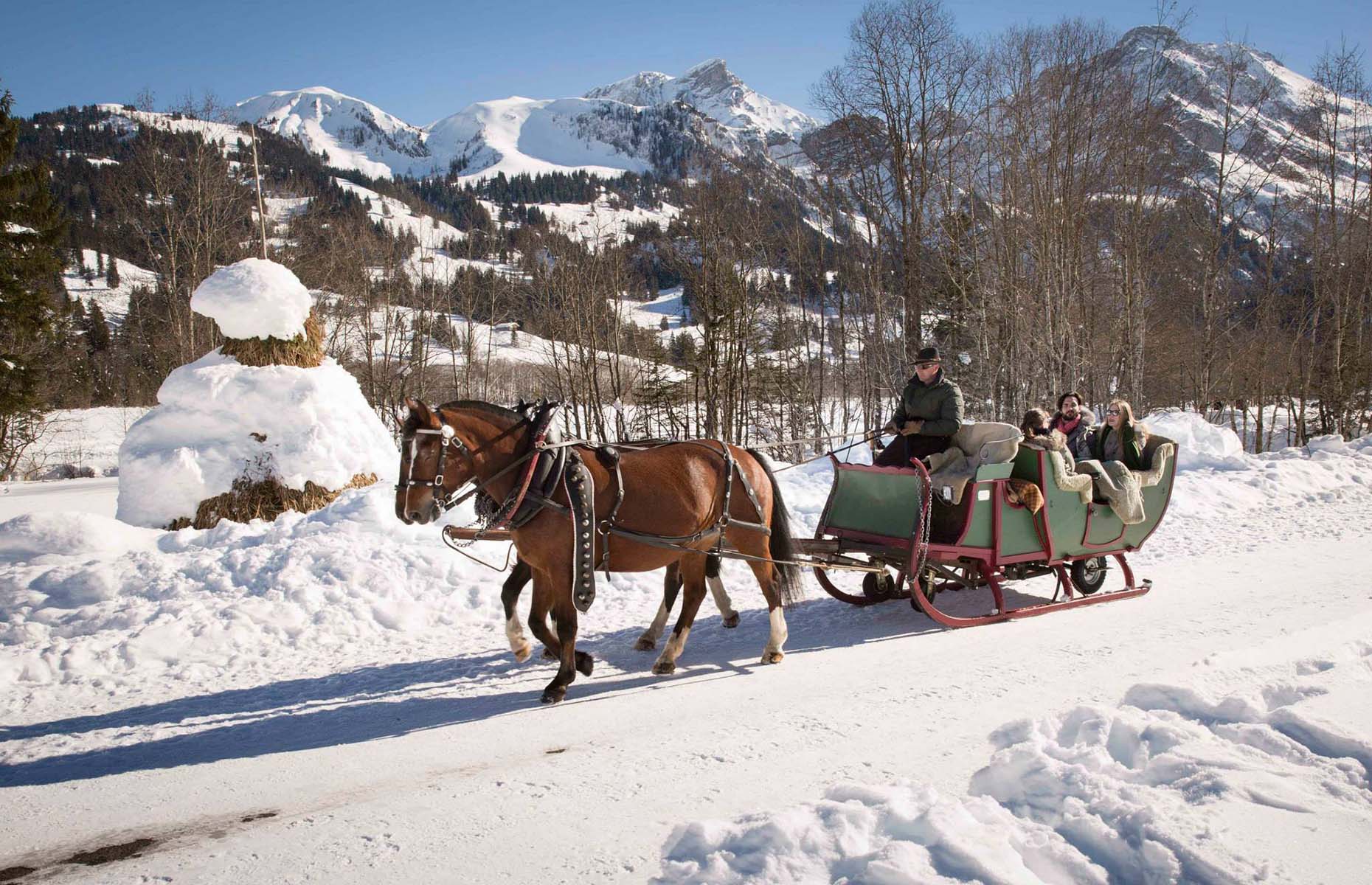 Kutscherei Reichenbach/Facebook
Kutscherei Reichenbach/Facebook
5. Have lunch on a glacier
From Col du Pillon, catch the cable up to Glacier 3000, the region’s highest point. Make your way to the Scex Rouge mountain station and follow the hour-long walk to Refuge l’Espace, a rustic mountain lodge perched on the southern edge of Les Diablerets glacier and by a towering rock known as Quille du Diable (devil’s skittle). As you’d expect at nearly 10,000 feet (3000m) above sea level, the views are knock-out but so too is the food.
Steaming bowls of barley and sausage soup, platters of melting Tomme cheese from Rougemont with truffled oil and roasted potatoes and Schüblig sausage with Saanen mustard are tucked into by diners on the terrace as they keep watch for bearded vultures in the brilliant blue sky as they eat – the largest birds in the Alps nest near the Quille du Diable.
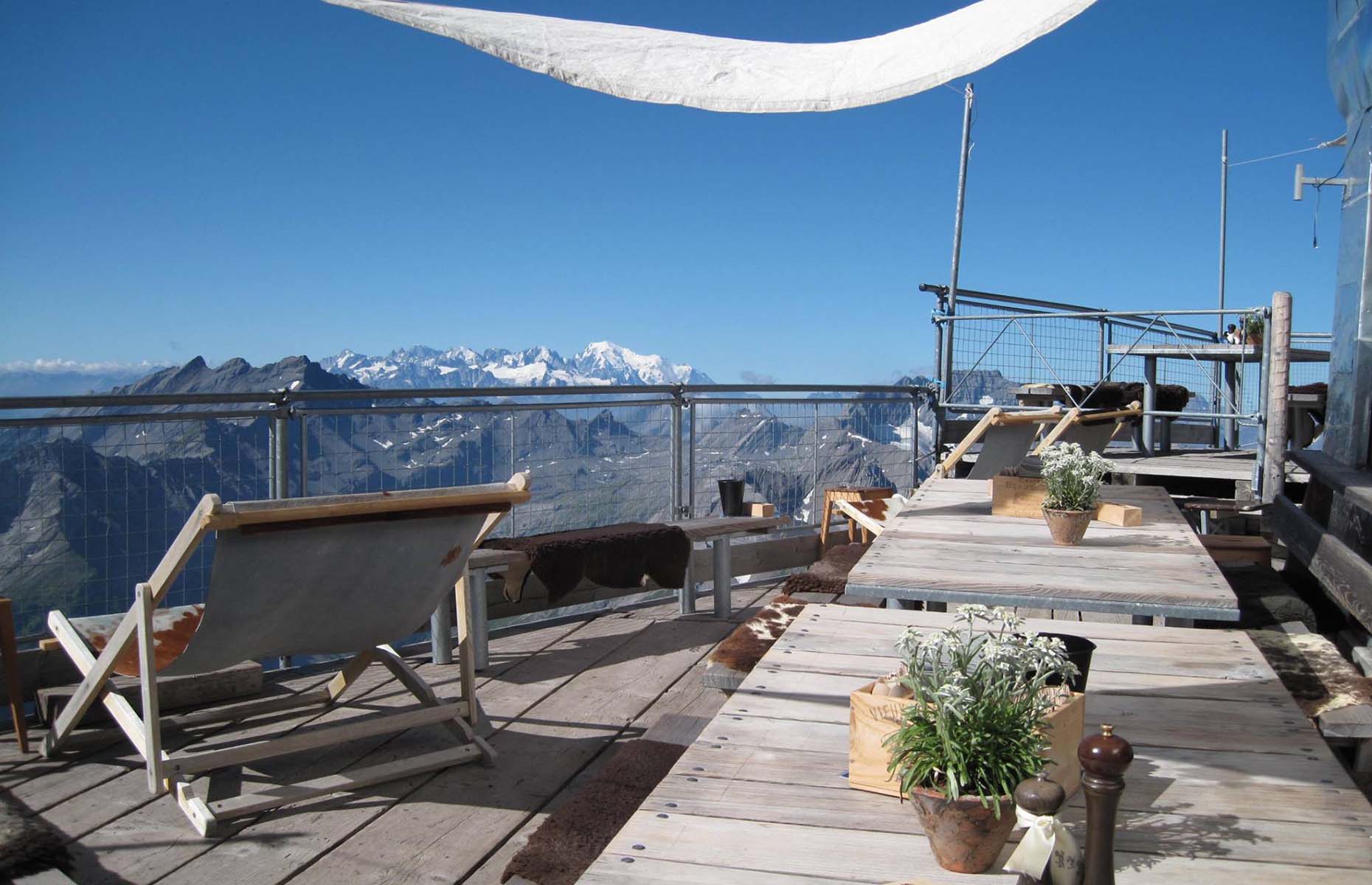 Refuge l espace/Facebook
Refuge l espace/Facebook
6. Walk between two peaks
Aside from Glacier 3000’s classic on-piste and off-piste ski runs, you can also take a lap of the snow-capped giant on husky-led sledges, glide around its 4.3 mile (7km) cross-country ski loop that covers most of the Tsanfleuron glacier’s surface and visit an ice cave. This high-altitude activity hotspot is also home to the only suspension bridge in the world that connects two mountain peaks.
The thrilling 351-foot-long (107m) Peak Walk by Tissot hangs between View Point and Scex Rouge, delivering drop-dead gorgeous views across 24 summits including Matterhorn, Mont Blanc, Eiger, Mönch and Jungfrau. You can walk across it as part of your entry into Glacier 3000 but be prepared for lengthy waits on clear days when people stride out to snap themselves dangling above the world.
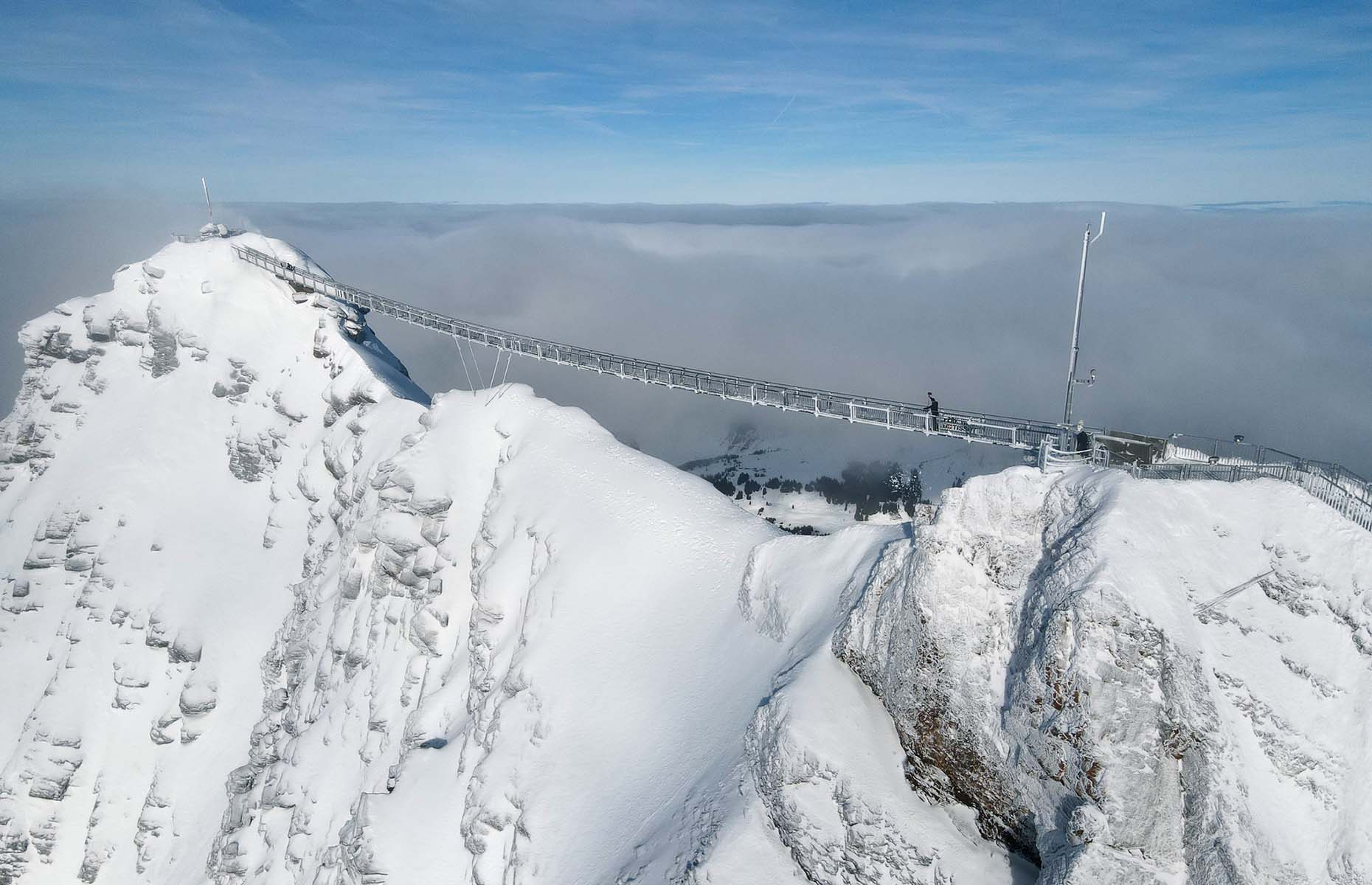 Glacier 3000/Facebook
Glacier 3000/Facebook
7. Hike through the snow and have a fondue picnic
With Gstaad’s tagline being “Come up, slow down”, there are plenty of ways to immerse yourself in the region’s clean air, deep blue skies and snow-covered silence. You could go cross-country skiing, snow shoeing or fat biking but a winter hike is a wonderful low-fi way to explore the fairy tale landscape at your leisure. From high-altitude to valley hikes, well-signposted walking trails loop up and around the region’s five valleys taking you into often deserted expanses of white snow and under its jaggedly beautiful peaks, occasionally cutting across pistes and toboggan runs.
Make an event of it by going armed with a fondue rucksack. You can order these kits (complete with fondue mix, bread, wine and pot) from a number of dairies, shops and hotels the day before you hike. Plan your route to stop off at one of the four oversized 'fondue pots' (circular picnic benches shaped like a pot) set along mountain trails or the specially designated huts to cook up your al fresco cheesy feast.
RAED MORE: Our guide to Zürich
Lead image: Eva Bocke/Shutterstock
Comments
Be the first to comment
Do you want to comment on this article? You need to be signed in for this feature